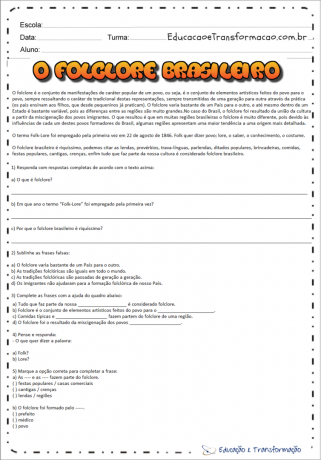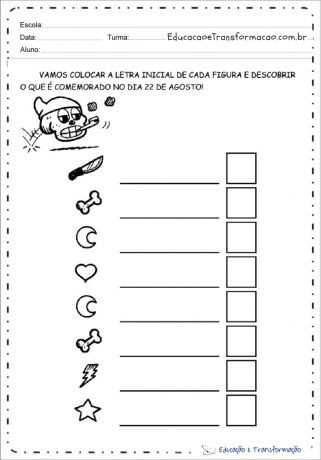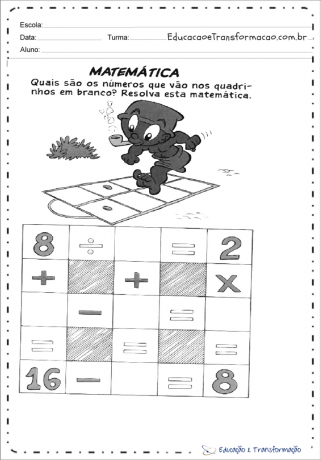We selected excellent in this post. Folklore Activities, ready to work with early graders in a classroom or homework assignment.
There are several suggestions of educational folklore activities to work the Folklore Day, date that is celebrated annually in Brazil in the month of August, on the 22nd.
We can define folklore as a set of myths and legends that people pass on from generation to generation.
Index

Suggestion: shuttlecock
To make this toy you will need:
Folklore Activities
How to make:
Check out others Ideas for working on folklore at school



Let's paint the character's name:

Let's put the initial letter of each figure and find out what is celebrated on August 22nd.

Draw the number of pipes required:

5 Mistakes Games: Find Between the Two Drawings Five Mistakes:

Word Hunt – In the table on the side there is a list of animals. Find your puppies in the box below!

Crossword:

Mathematics – What are the numbers that go in the blank comics? Solve this math.

the headless mule

There are many versions of the headless mule. One of them tells that a woman fell in love with a priest.
This woman has turned into a headless mule, who on Thursday to Friday nights appears neighing, to frighten everyone she meets.
Despite its name, the mule does have a head, it's just that she releases so much fire through her nose and mouth that she can't see this part of her body.
If someone is brave enough to pull the iron bit off her, or poke her with a pin to make her bleed, she can break the spell.
The mule takes the shape of a woman and cries a lot.
Answer:

Folklore Activities
– Survey of children's prior knowledge about the subject
– Presentation of the work proposal for the week – one myth a day
In the first week – The teacher presents one poster a day and works with it:
In the second week:
What is this dance?
How to make: To start the class on folk dance from the "tape stick" the teacher will be able to introduce the theme through internet videos that show how this dance is practiced in different contexts in Brazil.
Video suggestions:
Preparing the material:
Step-by-Step Tape Stick:
Suggestions of songs for this activity:
This activity is an excellent resource for the early series. Let's explore and meet the folklore characters Brazilian.
See the photo below:
Folklore Activities

Folklore Activities
How to play:
Folklore Activities
Necessary materials:
How to make:
After the story, the teacher should promote a workshop to teach children how to build a Saci.
For this, children will need:
How to make:
One suggestion is that, after this activity, the teacher proposes the construction of a collective text talking about the Saci habit. smoking, pointing out the harm of smoking to health and proposing other alternatives to Saci that do not encourage the habit of smoke.
Subscribe to our email list and receive interesting information and updates in your email inbox
Thanks for signing up.